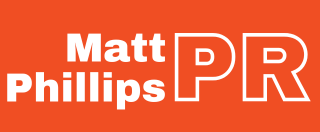Creating PR coverage using data.
“Own the data, own the narrative”. But, equally, data-led PR activations can cost a lot of money and fail to deliver. Everyone loves a list but with journalists suffering from ‘study fatigue’ how can your brand cut through and stand out?
What’s your personality type, and how do you compare to others?
About a decade ago I worked with a business that used personality quizzes to profile audiences online for targeted advertising.
By modelling shopping intent and emotive behaviours, VisualDNA brought something new to a market where ad targeting was based on browsing data and demographics.
It appealed to agencies that wanted to encourage clients to divert more media spend into programmatic advertising and make it more effective.
My brief was to:
✅ raise awareness of VisualDNA in ad agencies
✅ showcase points of difference (emotive and intent data, in UK & US)
✅ create coverage to enhance the company’s credibility
So we looked at storytelling using the company’s own data.
But what to ask?
Data points are not interesting or PR-worthy in isolation. It needs to tell a story - what’s changed, how do we compare?
It’s human nature to conform to “tribes” - we like to put ourselves into a story and compare ourselves to others.
So we asked the team one question;
“On which behavioural traits do US and UK consumers differ the most?”
By finding tension - points of difference - we thought we’d find an angle to either rebut convention, or conform to stereotypes.
The data found that British people were more likely to feature in the ‘Careful Spender’ and ‘Downhearted’ categories.
Data stories can earn coverage by forcing comparisons between groups, and going against (and sometimes with) stereotypes and conventional wisdom.
This supported the stereotype that Brits are miserable/ grumpy while Americans are cheery/ optimistic.
It landed us a double page spread in Marketing Week - a difficult thing for an ‘adtech vendor’ to achieve.
Three other things helped land the story....
💡 This data was offered as an exclusive package to one journalist. We provided lots of other data points too, packaged as a ‘study’ so the journalist could create fresh angles from the data.
💡 We found two marketers who would speak directly to the journalist to validate the problem. Case Studies are a requirement for most stories, brand marketers essential for Marketing Week (our top target).
💡 We provided a snappy, “plain English” quote from our own spokesperson - the person who would be leading commercial discussions with the agencies and “using” the coverage.
This was one of about 10-15 pieces of strong trade media coverage we created over 2013/14.
Still visible and prominent, it is still one of the brand’s top hits on Google.
It helped differentiate the business from its peers. It led to further coverage. And it drove sales.
VisualDNA sold to data giant Nielsen for an undisclosed sum a few years later; the brand is still visible online as an emotive data provider.
A good example of how creative media relations can deliver on multiple business objectives - #fullfunnelPR as I call it.

